
24 Aug Can the Rod Save the Day
I GOT A RAMBLING LETTER FROM A FRIEND the other day talking about rods. His fly rods, that is, past and present: what they were, where they came from, where some of them eventually went (in recent years he’s given some away to guides) and what he liked or didn’t like about them. It was the kind of letter you write to a friend who shares your interest and who you don’t have to impress — basically a two-page, stream-of-consciousness postscript.
There were surprisingly few rods considering that this man is a retired doctor in his late 80s and a lifelong fly fisher, but then not all of us are tackle freaks. I am a tackle freak, although after years of accumulating rods I’ve come to envy those who fish comfortably with what they have instead of always looking for something better. Marksmen like to say, “Beware of the man with only one gun because he knows how to use it.”
The search for the perfect rod begins early in a life of fly fishing and often for the wrong reason. As a beginner, you’re a poor caster and you naturally want to get better. In a commercial culture like ours, that suggests a better rod, which you are led to believe is a rod that costs more than the one you have. I mean, if one rod sells for $129.95 and another of the same material, length and line weight sets you back $700, why the difference in price if the expensive one isn’t better? This is one of the burning philosophical questions of our time.
In fact, what you probably need are casting lessons, regular practice and, most of all, lots of fishing, since casting on water with fish in it is different from casting on a lawn, for reasons having to do with both physics and psychology. Also, there are things you’ll learn on your own through constant exposure that no one could ever teach you.
But then in some rare cases, the rod you start with really is a clunker that holds you back. Maybe, as in my case, you bought it at a yard sale for a few dollars because that was all you could afford at the time. Before you handed over the money, you put the rod together and wiggled it as you’d seen others do, but that was just for show. You didn’t know the first thing about fly rods, but you had the itch and had to start somewhere.
My first fly rod was a 7.5-foot, four-piece fiberglass fly-spin combo with a reversible reel seat. Two rods for the price of one: What a deal! I wasn’t much more than a kid at the time, but I still should have known that a tool that’s supposed to do two separate jobs wouldn’t do either of them very well. I did manage to catch some fish on this thing, but a kindly stranger who stopped one day to give me some much-needed casting tips ended the brief session by saying, “And when you get a few bucks running uphill, you really oughta get yourself a better rod.” He was just trying to be helpful and he was right, but the idea that a new rod could improve my casting took root and ruined me for life. The obvious danger is that a fly rod — especially an expensive one — can be seen as a talisman with some inherent power of its own, while in practice it’s more likely to be like a Stradivarius violin in the hands of someone who doesn’t play well: a flawless instrument that nonetheless squawks like a chicken.
I did eventually get a rod that was better (almost anything would have been) and it proved to be the first of many. At that time I could have done virtually all my trout fishing with the 8-foot 5-weight Granger Victory I picked up for $50, but many of the fishing writers I was reading left the impression that doing all your fishing with one all-around rod was like performing brain surgery with a can opener. So I came to think I needed shorter 4- and 5-weights, longer 5- and 6-weights, 7-weight streamer rods, 8-weight bass rods, 9-weight salmon rods and so on, not to mention the reels and lines to go with them. Later, when I started traveling a lot, I backed up my two-piece rods with three-piece models that I could carry on airplanes. Then I gradually accumulated spares in case I broke one.
I developed the usual nit-picking preferences. I think a rod should be as long as possible for leverage and line mending and as short as it has to be for convenience. On my small home water, an 8.5- or 9-foot rod is best for line control, but it’s too long to cast in tight quarters or even to carry from pool to pool through thick woods. A 6.5- or 7-foot rod is about the right length for casting but doesn’t give you the reach and leaves too much line on the water. Obviously the ideal rod for mountain creeks is 7 feet, 9 inches. That must be why I have four rods of that odd length: three 5-weights and a 4-weight.
My first good rods were all used split bamboo by defunct makers, but don’t ask me why all these years later. It must have had something to do with my ideas about tradition, craftsmanship, romance and the dubious value of practicality in sport, not to mention the sense that we’re too quick to leave the best we have behind us and call it progress. It was also a sign of the times when graphite was new, fiberglass was fading and bamboo was still a viable choice rather than a social statement. …
… At one point I even published a monograph on bamboo rods without realizing that this little book would mark me for life as a true believer. Some years later on a river in northern Canada, I met a man who said he was shocked to see me fishing a graphite rod. Shocked!
We’re all children of our times. Bamboo spoke to me then and still does now, but if I took up fly fishing today, there’s a good chance I’d put these rods in the same category with cherry 1957 Chevys driven by older guys for reasons that aren’t immediately evident. It boils down to this: If you’re young now and your fly-fishing career lasts as long as you hope it will, eventually someone will point at your graphite rod and say, “You still fishin’ that old thing?”
But I was never really a purist and so I cautiously tumbled for graphite when it first came out. Through a fly shop where I worked, I got a screaming deal on some J. Kennedy Fisher graphite blanks and built myself a 9-foot 5-weight and a 10-foot 6-weight. I fished the 9-footer off and on for years. I liked it, but I didn’t love it and finally gave it to an old friend who was moving to Alaska and needed a grayling rod. The 10-footer never quite worked out. Like most of the 10-foot rods I’ve cast, it had no real reasons to be longer than 9 feet, and it was a two-piece blank, so the 5-foot-long case was unwieldy. I still have it. I’ve tried to trade it off a few times, but no one wants it.
Through the same shop I got one of the first Sage graphite rods at cost. I think it was an 8-foot 6-weight. I remember it as having a softer, more elegant action than most graphites, which at the time were all about “speed” and “power” as if they were fly fishing’s answer to muscle cars. Like most graphite rods, it was soon made obsolete by newer models, although I’m told that in certain circles those original Sage graphites are now considered modern classics. I traded that rod, but I wouldn’t mind having it back now. I can’t remember what I got for it, but I’d learned by then that once you put money into tackle it was best to leave it in tackle. That way you’d always have something new to play with, while cash would just slip through your fingers and be gone forever. …
To this day most of the rods I like and use are bamboo and only a few are graphite, although the graphites are gradually accumulating. Of those, most are longer rods for heavier lines — including spey rods — where I think the lighter material really shines. But that’s because I came to graphite after I already had a stack of favorite bamboo rods that, for reasons of habit, sentiment or stubbornness, I wasn’t about to give up. In any event, I came to understand that it doesn’t matter what a fly rod is made of. What matters is how it works. It also doesn’t matter if your hammer has an old-timey wood or newfangled fiberglass handle; what matters is balance and weight, which is a matter of personal preference informed by the job at hand. A light hammer is easier to swing all day, but a heavy hammer takes fewer swings and less muscle to drive a nail. …
… It would be nice if I could leave it at that, but although I own enough rods to build a picket fence around my property, I can sometimes be convinced that I need just one more.
In the long run, it’s possible that there’s no such thing as the perfect fly rod because a rod is a study in paradoxes. It has to be as long as possible but as short as necessary; sensitive but powerful; able to cast a line and play a fish (two distinctly different chores) and so on. A good fly rod would fit Aristotle’s idea of virtue as falling midway between two defects, so that courage is well beyond cowardice, but somewhere short of recklessness. …
… I now own some of the best fly rods I’ve ever cast — plus a bunch of others that I don’t really know what to do with — but I’m not sure if that’s helped or hurt. When it’s all said and done, I’m an adequate fly caster with an option to be slightly better than most when I’m fishing a favorite rod on familiar water on a good day. But I’ll probably never be as efficient or as stylish as I’d like to be. I was fishing with a friend once and we got to talking about casting during a break. I said, “I always wanted to be a pretty caster” (maybe trolling for a little compliment). He said, “Well, you’re not, but you get the fly where you want it and that’s what counts.”
- Angler Bryce Connery, with Lone Peak Outfitters, sets the hook while fishing on the River Why Ranch in Montana. Photo by Drew Stoecklein
- A self portrait of Ken Takata at Ousel Falls in Big Sky. The rod is a Scott “old-style” graphite rod, a “906”. Photo by Ken Takata
- A frosty, foggy morning in Yellowstone Park. Small streams often call for light tackle, and the rod being fished here is an Orvis Flea from the mid-1970s. At 6.5 feet for a 4-weight, it’s ideal for a stream this size. Photo by John Juracek
- Classic water, classic rod, chunky brown trout. This fish came from Yellowstone Park’s Firehole River and was caught on a 1960s-era Orvis Battenkill rod. The rod is 7.5 feet long and uses a 6-weight line. Photo by John Juracek
- A striking boulder graces the Gibbon River in Yellowstone Park. The small size of the Gibbon lends itself to shorter, lighter bamboo rods. Photo by John Juracek
- Most people think of bamboo rods as delicate, but many are anything but that. They can be designed to easily fish large, heavy flies, as this angler is doing at dawn on Montana’s Hebgen Lake. The rod in use here, is an 8 foot 6-weight Orvis Madison. Photo by John Juracek
- This beautifully marked specimen of a rainbow trout was landed and released on the Bighorn River in Montana. The rod is an Orvis Impregnated bamboo rod and the reel is an Orvis CFO III. Photo by Ken Takata
- Angler Bryce Connery casts with a 8.5 foot, 4-weight Boron IIIX rod by Winston on a stretch of water located on the River Why Ranch. Photo by Drew Stoecklein




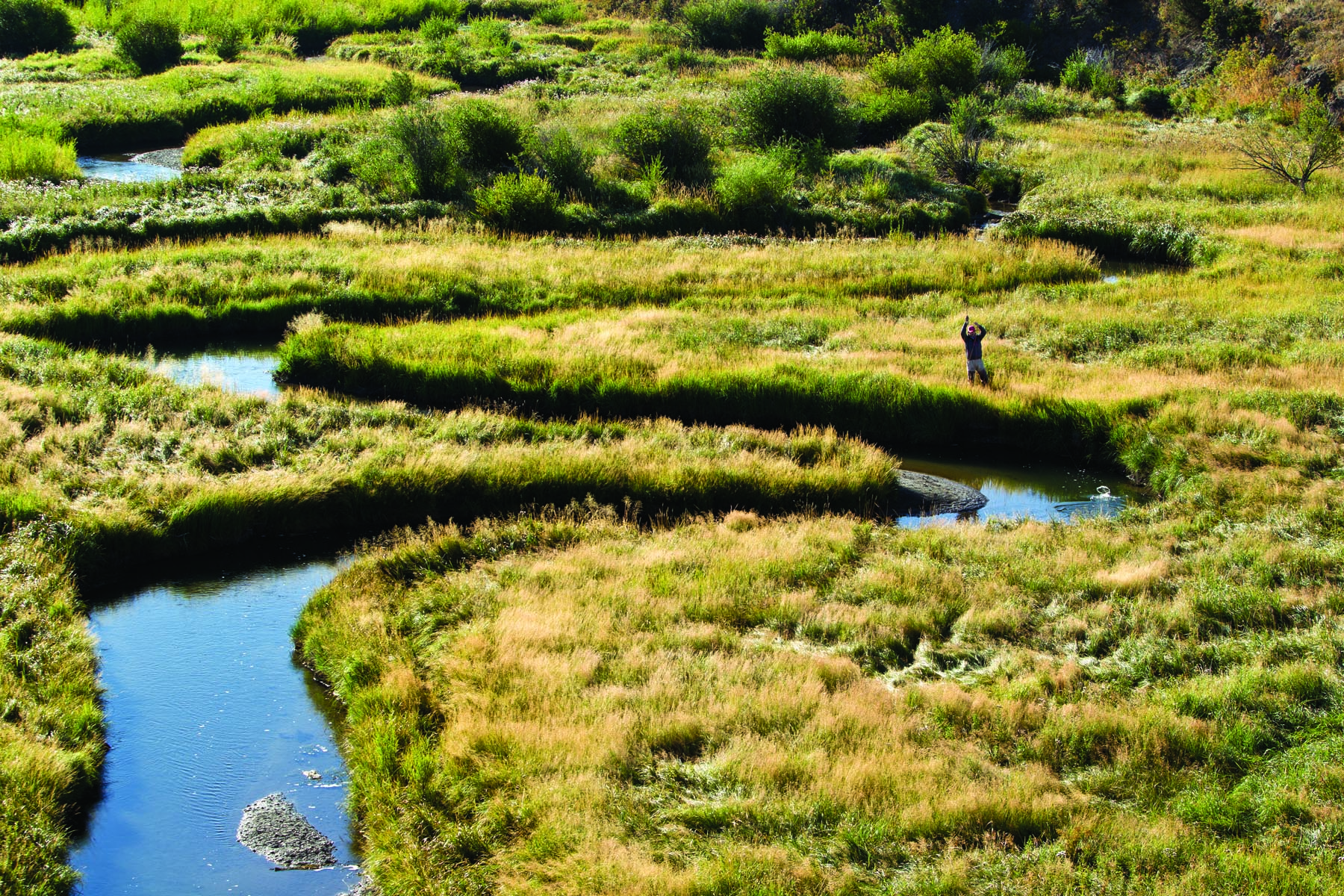


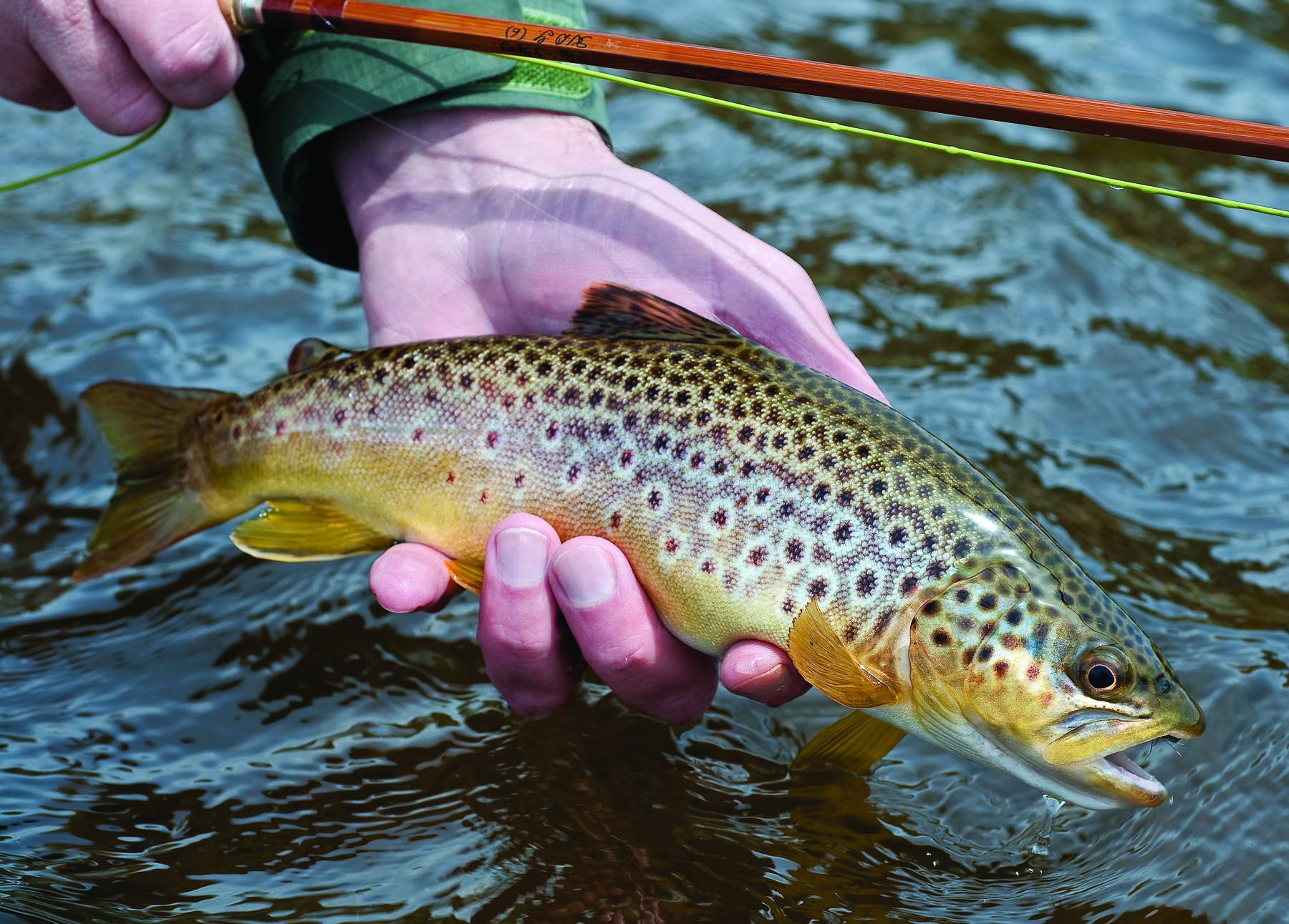
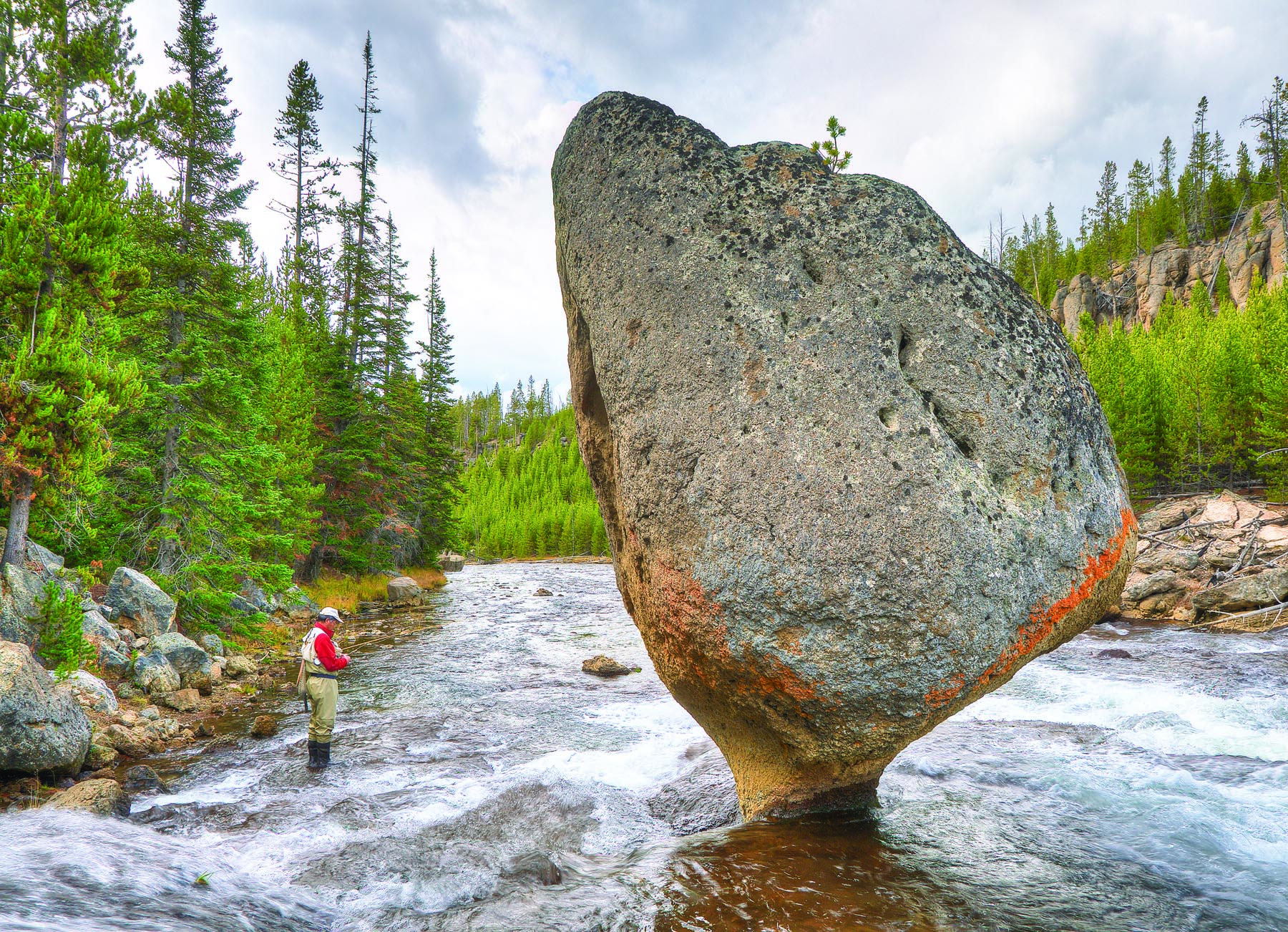
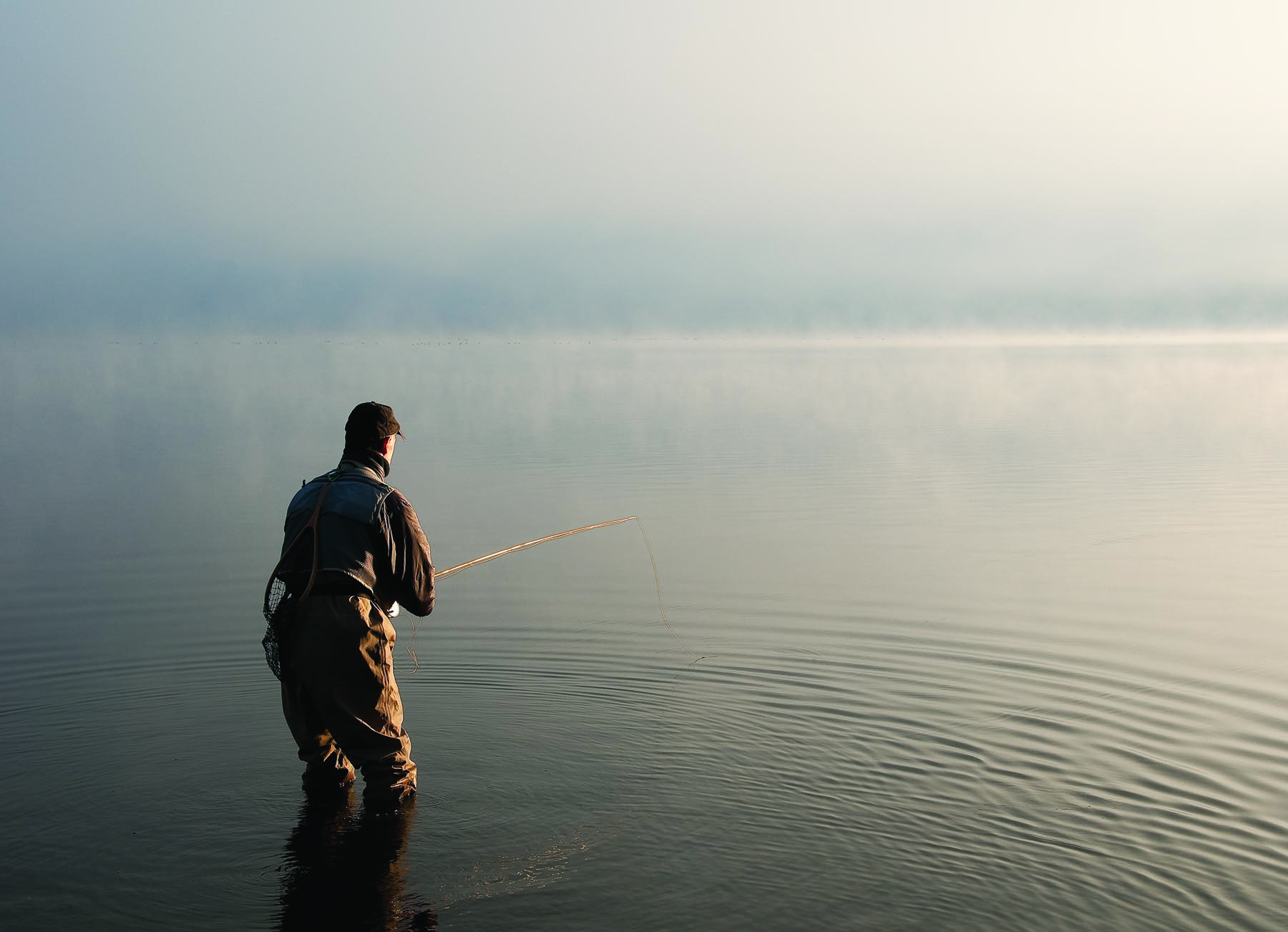

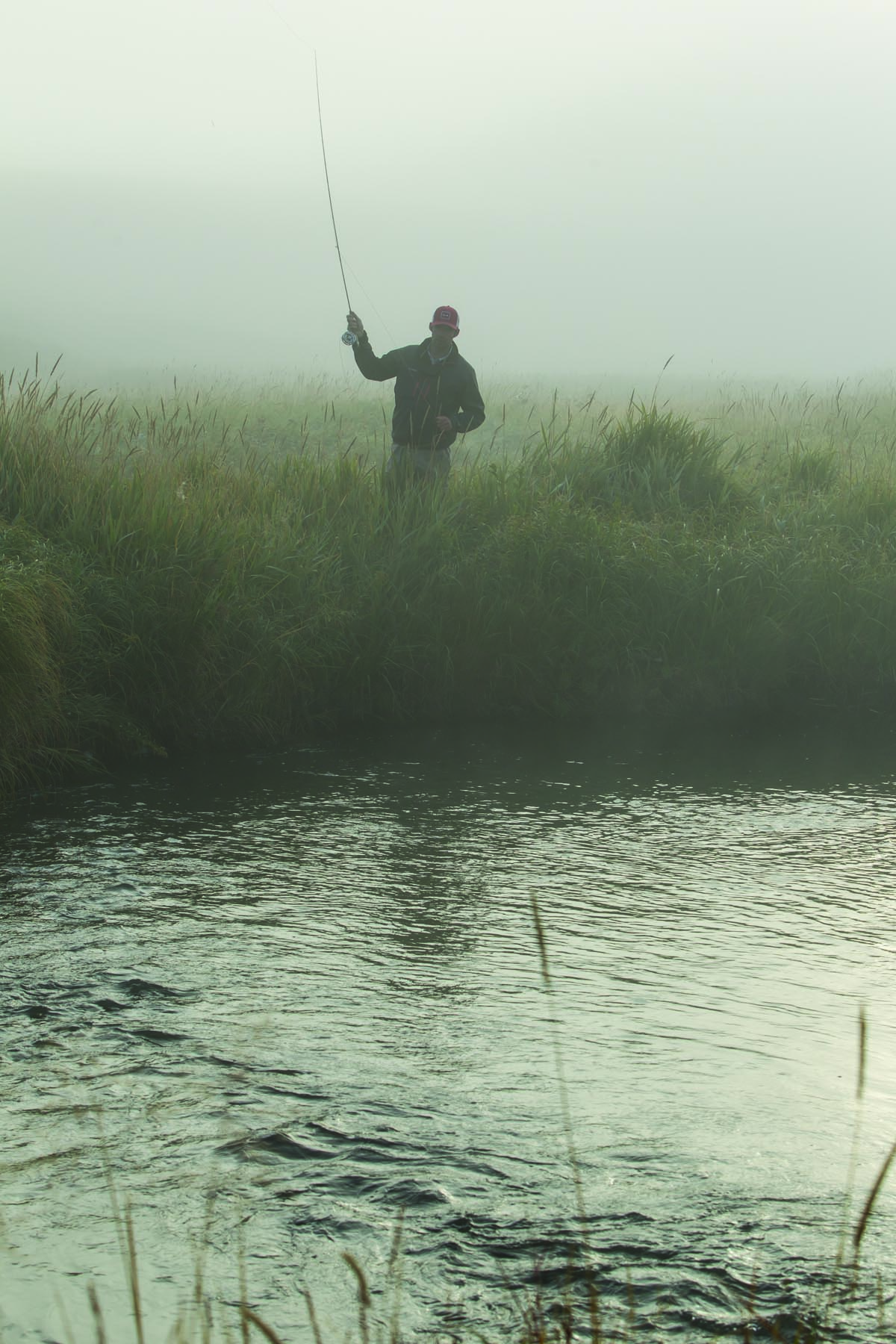
No Comments